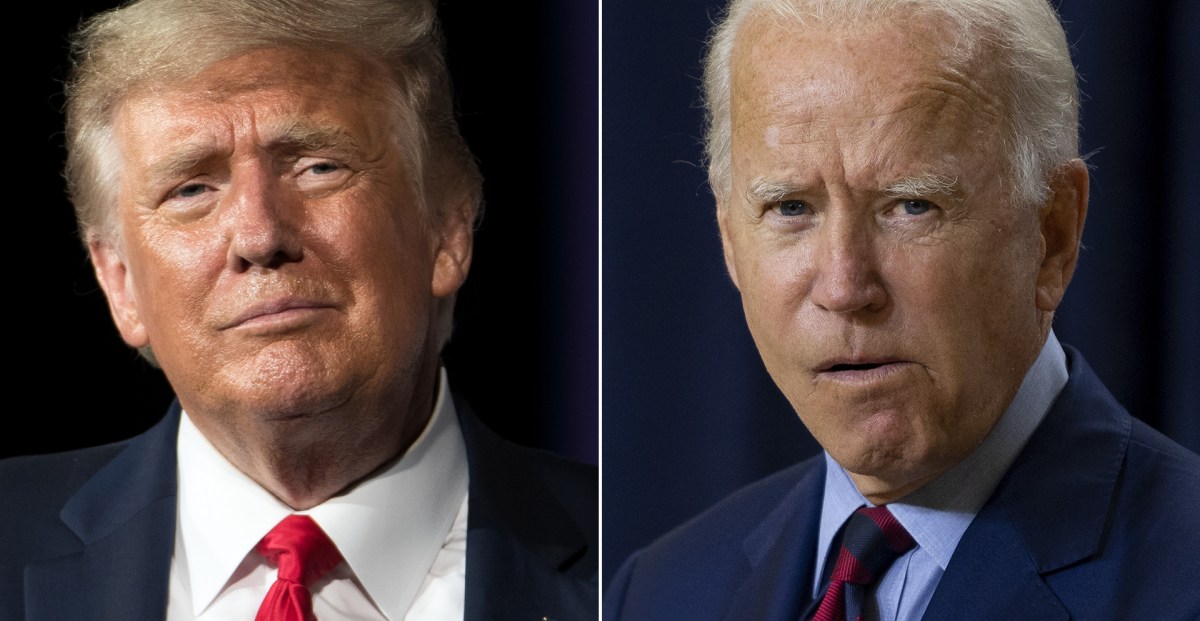Although no candidate for the US presidential elections had previously withdrawn 5 weeks before the date of the polls, the current President Donald Trump's hospitalization after being infected with the Coronavirus raised questions about this possibility.
The constitution provides for only two cases in which the president can be replaced by his deputy in the event of his death or inability to exercise his authority.
The Twentieth Amendment deals with the death of the president on the date set for the start of his term (January 20), while the 25th amendment deals with the death of the president during his term.
But other scenarios could happen in the event that Trump (74 years) or his Democratic rival, Joe Biden (77 years), dies before the November 3 elections, the most prominent of which are:
Postponement of the elections
That would be a precedent in US history, which is unlikely.
Even in the midst of the civil war in 1864, the presidential elections took place on schedule and were not postponed.
At the end of last July, Donald Trump proposed the idea of delaying the elections, which caused a sensation at the time.
The date of elections is determined by federal law, and only Congress can take a step.
The agreement on a new date goes to the House of Representatives, which includes a democratic majority, and the Senate, which is controlled by a Republican majority.
Capri Cafaro, a professor at the American University of Washington, considers that "it is unlikely that the majority of Democrats will accept the vote delay" at a time when Biden is leading national opinion polls.
Replace filter
The Democratic and Republican parties can replace their candidates if one of them is unable to run, but that also seems unlikely as the polls approach.
The Democratic candidate must be chosen by about 450 members of the party's national committee.
In the case of the Republican Party, there is a national committee of 168 members who chooses a new candidate.
The committee may hold its national conference and assign 2,500 delegates to choose an alternative candidate.
In both cases, the new candidate is chosen by a simple majority, but this poses a logistical problem, as tens of millions of ballot papers have already been printed.
Capri Cafaro explained that "there is not enough time to reprint the cards in the names of Mike Pence or Camilla Harris," the vice presidential candidates.
In addition, more than 3.1 million voters have so far voted by mail due to the emerging corona virus, according to a study by the University of Florida.
Also, the deadline for nominating a candidate has been exceeded in several states.
Leave the decision to the electorate
When Americans vote for a presidential candidate, the winner will be whoever receives the majority of the votes of the 538 elite voters who make up the electorate.
The names of the members of the electorate - most of whom are representatives or local officials in their party - do not appear on the ballot papers, and the vast majority of them are unknown to public opinion.
In each state there are as many electors as it has in the House of Representatives (varies by population) and the Senate (two from each state).
California has 55 senior voters, and while Texas has 38, there are only 3 senior voters in the least populated states of Alaska, Delaware and Vermont.
The vote of the major electorate is subject to the laws of the states of the United States, which all - except for Nebraska and Maine - give all of the votes to the winner of the popular vote.
The constitution does not oblige the top electorate, but last July the Supreme Court said that "dishonest" voters could be punished if they did not adhere to the citizens' choice.
The Electoral College meets on December 14 to formally determine the winning candidate.
On January 6, 2021, following the official vote count, Congress officially announces the name of the new president, who will take the oath on January 20.

